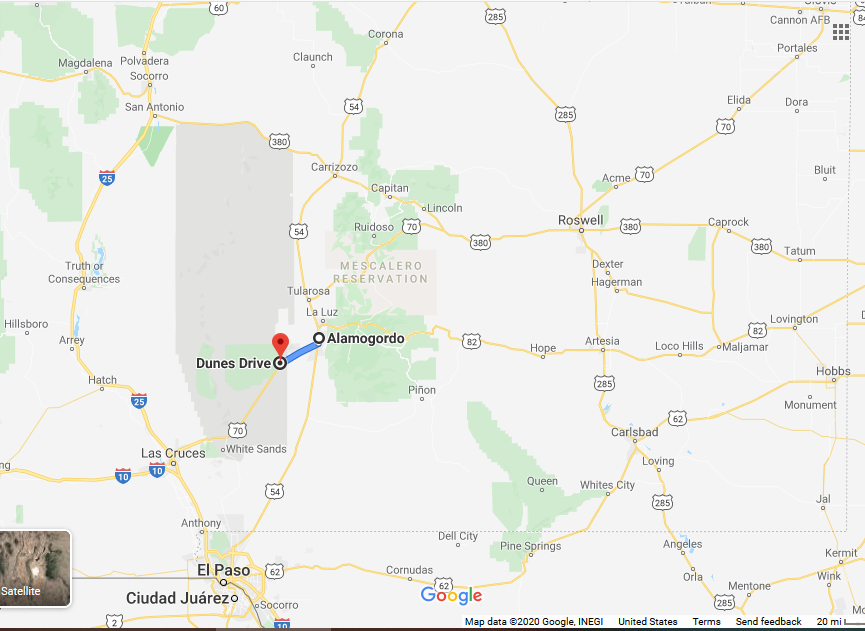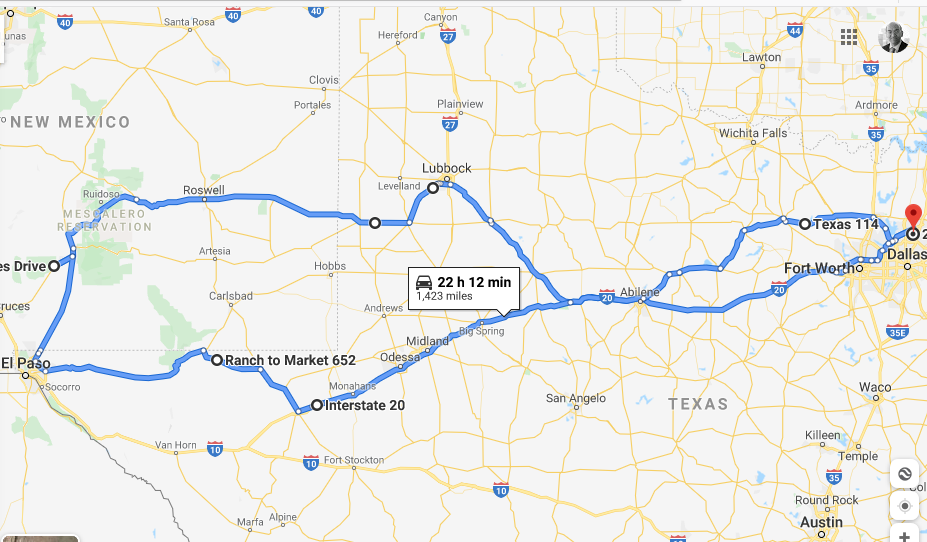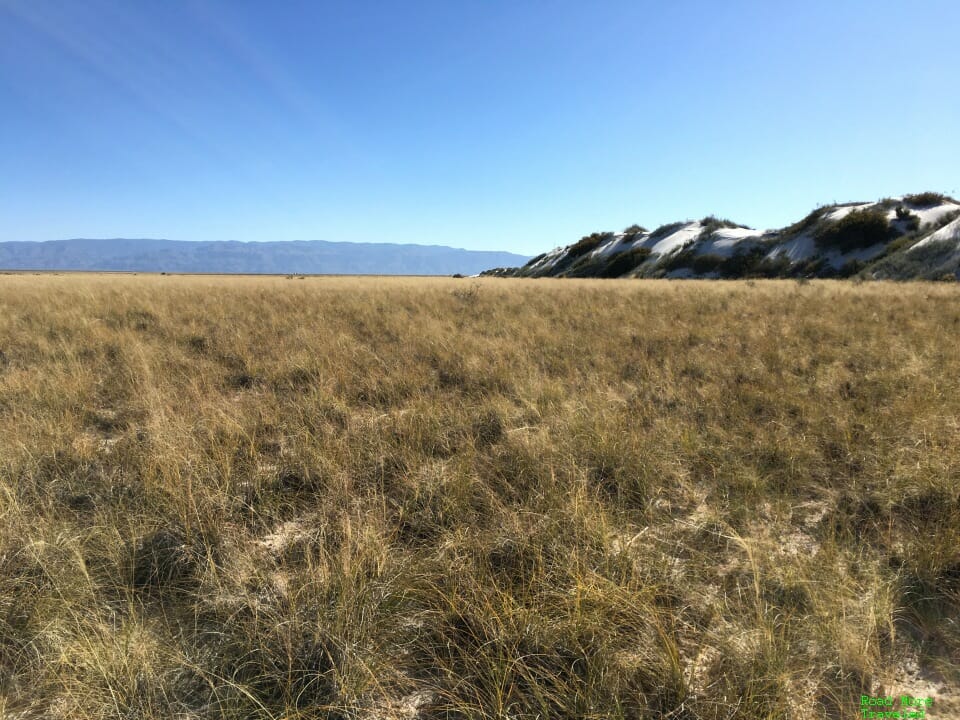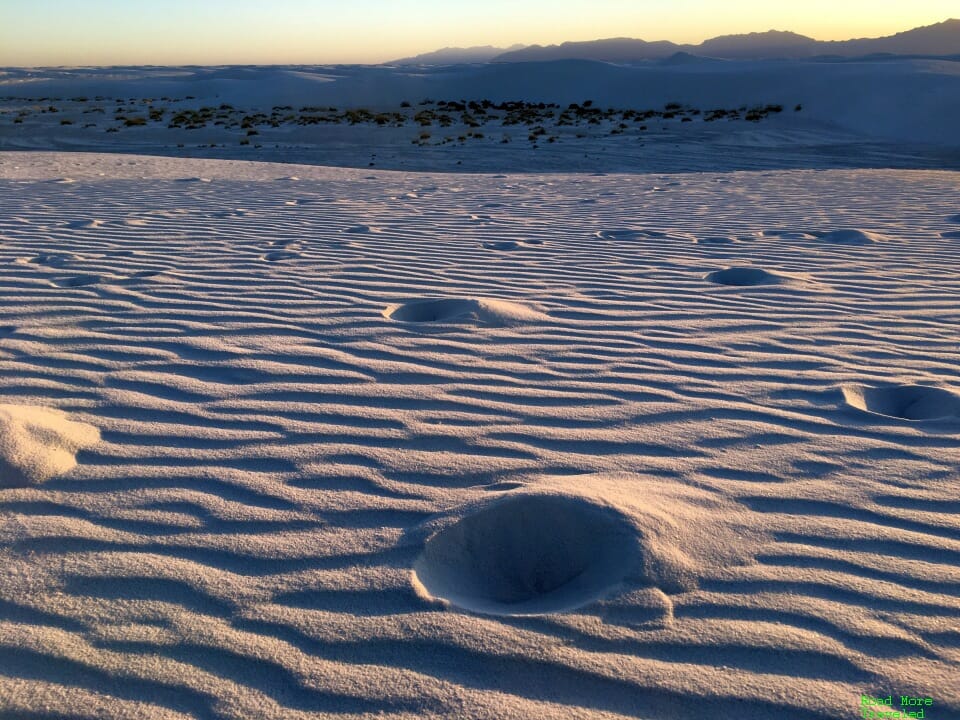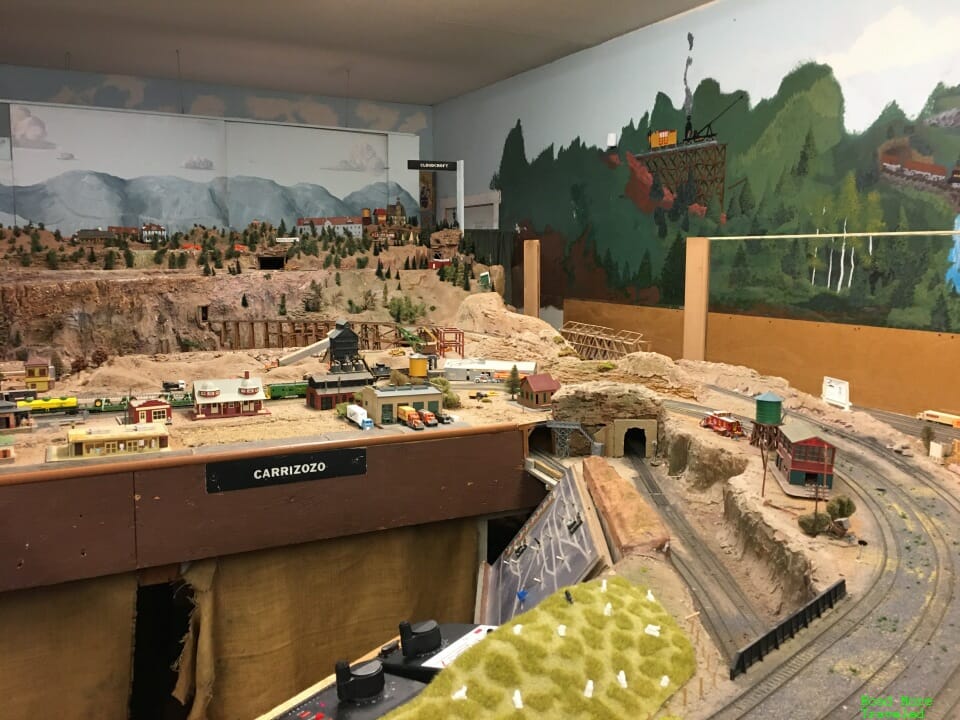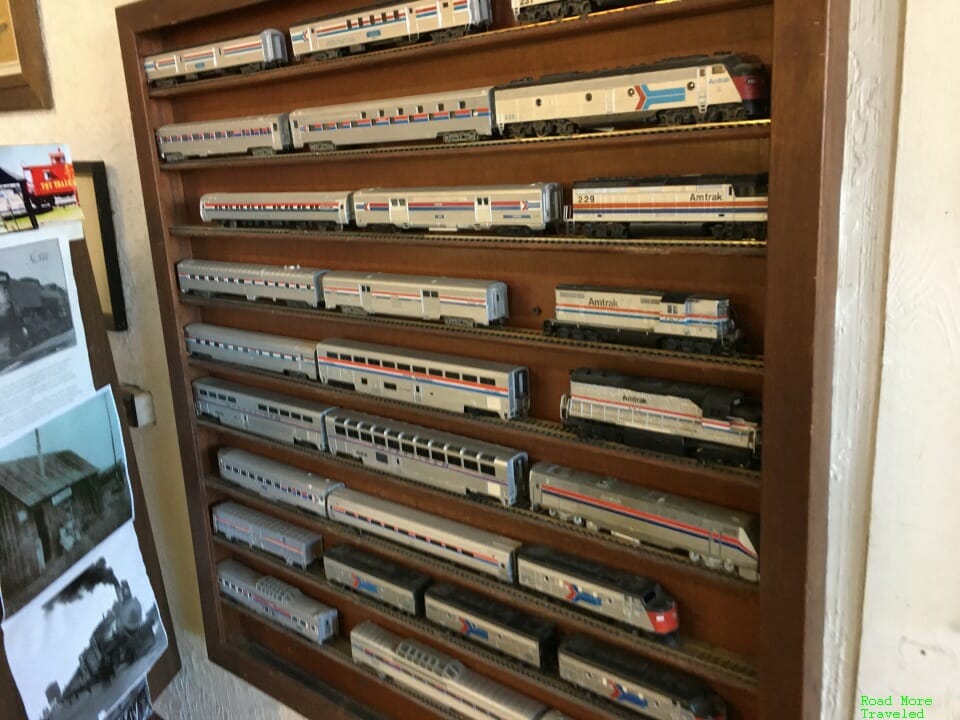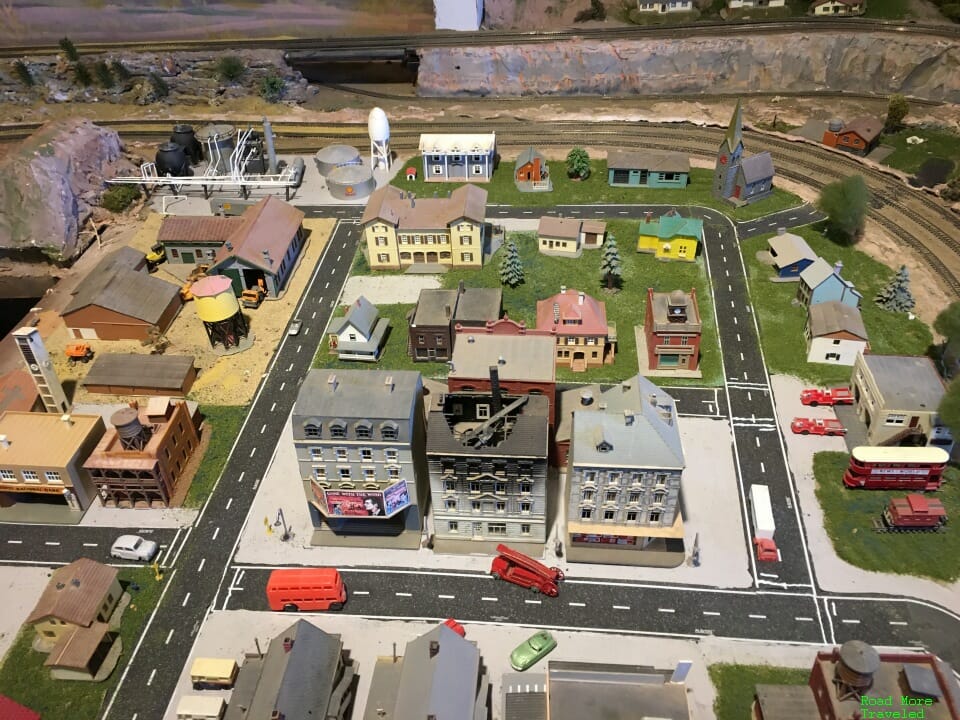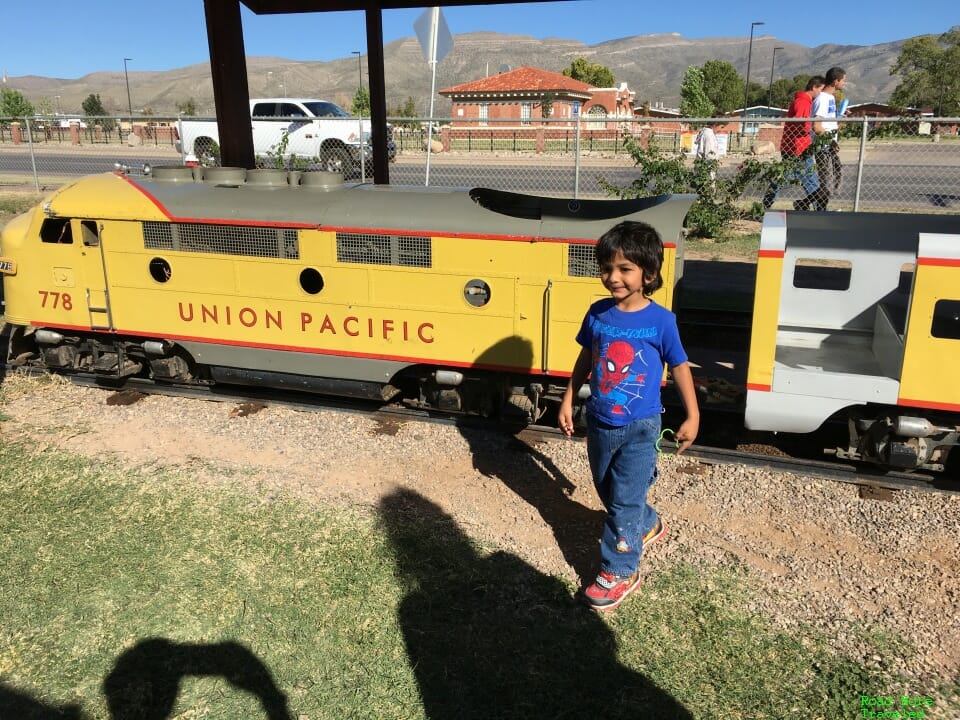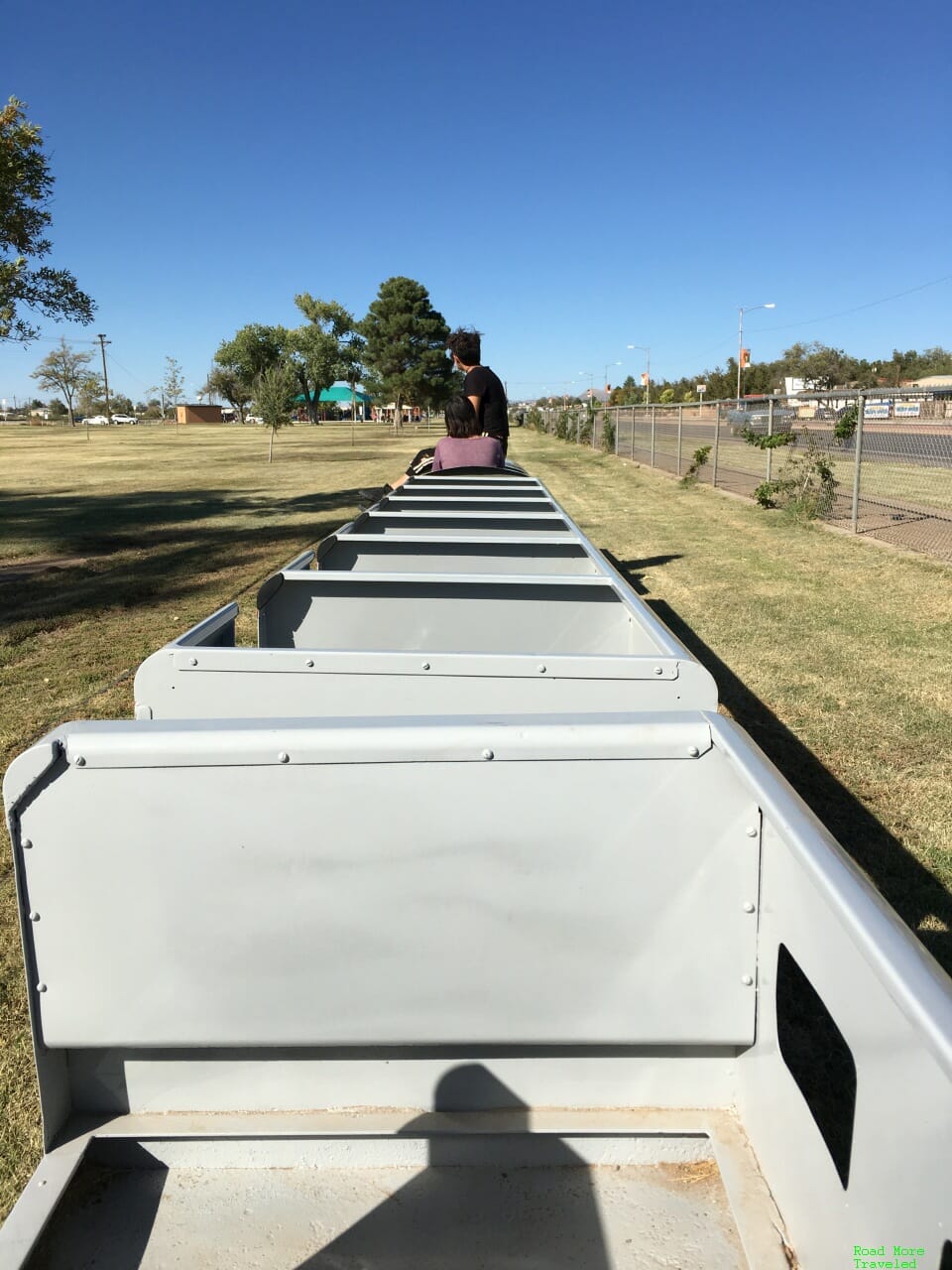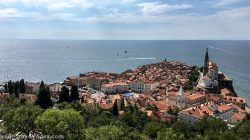As mentioned in my 2019 wrap-up post, I did squeeze in one meaningful road trip in 2019. This 5-day journey took us to the White Sands of New Mexico. White Sands, long a National Monument, was granted National Park status as of December 21, 2019. My visit in October made it my 34th national park out of 62, getting me that much closer to my bucket list goal.
White Sands National Park – The Basics
Like many National Parks, White Sands does take some effort to get to. The nearest major cities are El Paso, 95 miles south, and Albuquerque, 225 miles north. Both offer frequent air service, though likely via connection. However, both Alamogordo, 16 miles east, and Las Cruces, 50 miles west, offer plenty of visitor services.
From Dallas, the drive clocks in at about 625 miles. You can do it in one day, but we decided to spread it out over two. We took a circle route do a couple of other things: hit up a Top 50 BBQ joint outside Lubbock, and visit Guadalupe Mountains National Park on the way back.
For the record, the BBQ, at Evie Mae’s Pit Barbeque outside Lubbock, was very good. Though I’m not sure it was “stand in line for 30+ minutes at 11:15 am” good.
We decided to stay in Alamogordo, given the short drive to the park. The small city (population 31,000) offers many mom-and-pop motels and restaurants. But if you’re a hard-core points junkie, chain options are limited. There’s a Hampton Inn (Hilton), a couple of Holiday Inns (IHG), and a Fairfield (Marriott). Las Cruces offers more options there if that’s important to you. We ended up staying at the Magnuson Hotel; they offered a suite with a kitchen at a reasonable cash price. I’m finding both larger suites and kitchens provide a lot of value with an active toddler. Anyway, it’s quite decent as roadside motels go. It’s definitely a 60s-era “motor court”, but it’s clean, and the staff friendly.
As with most National Parks, White Sands charges an entry fee of $25 per vehicle; the fee allows in-and-out privileges for a maximum of 7 days. There are no services available in the park, so stock up before coming.
So what makes the park special? At nearly 275 square miles, it’s the world’s largest gypsum sand dunefield. The heart of the park lies along Dunes Drive, the main (and only) road through the park. Dunes Drive extends 8 miles into the park, with the first 5 miles paved. The last 3 miles consists of a hard-packed, gypsum road. You don’t need 4-wheel drive for the unpaved portion, though. Any vehicle can make it through; just watch for potholes.
Along the road, you’ll find three short hiking trails, the Playa Trail, the Interdune Boardwalk, and the Dune Life Nature Trail. These trails are for nature viewing only; you can’t sled or play in the sand here. For that, head to the unpaved section of the road and the “heart of the dunes”; here, you’ll find numerous parking areas where you can sled, climb, and otherwise play on the dunes. The Park Service allows backcountry camping in a designated area of the dunes, but you must register and pay a fee.
Note that only about half of the park’s area is normally accessible by the public. The remainder lies within the White Sands Missile Range, and as such, permits are required for access. Also, missile tests at the range occasionally force the temporary closure of the park. Closures last up to three hours, and are usually (but not always) posted 2-3 weeks in advance. Click here to check closure information before heading to the park.
A Virtual Tour of the White Sands of New Mexico
Date of Visit: Sunday, October 27, 2019
We spent a single day exploring the sands, though on two separate visits. In the morning, we started with a visit to the Dune Life Nature Trail. Think of this as a “tweener” ecosystem; it mixes the desert scrub of the Tularosa Basin with the edge of the dunes. The trail begins at a parking lot in the flat scrubland, but requires scampering up the sand to reach the dunes.
Once you make that short scamper, though, the trail is relatively level through the dunes. It winds along the dune in a one mile loop; look for the clubs (like in a card deck) markers to remain on the trail. As mentioned, this section of the park marks the edge of the dunes, with more vegetation than the heart of the dunes. You’ll find several plants typical of the southern New Mexico desert, including yucca trees.
Several species of wildlife live in this area, but don’t expect to see much. Most animals avoid coming out during the day to avoid the heat of the sun. You can, though, see many small tracks in the sand, evidence of the critters scurrying about.
You also get a small taste of the endless sea of sand prevalent in the rest of the park.
At the edge of the dunes, enjoy a nice view of the flat desert plain below, with the dunes in the distance.
This section of dunes isn’t meant for sand play. Rather, it’s more of a nature trail, so leave the sand toys in the car. But when you have a 3-year old boy, the sand certainly grabs their attention.
The NPS rates this trail “moderate”, mainly due to steep step-up to enter the dunes. Though you do walk on sand, I found it more hard packed than elsewhere in the park. Thus, any sturdy shoes should suffice. You will notice a sign at the trailhead advising not to proceed in temperatures exceeding 85 degrees. The issue isn’t the sand itself. Unlike beach sand, the gypsum sands here actually remain cool to the touch, even in the summer heat. The problem, as the pictures illustrate, is shade, or rather lack thereof. We enjoyed pleasant 70-75 degree weather during our visit, but summer temperatures often exceed 100 degrees. Carry plenty of water and head cover if it’s hot outside.
With our intro to the sand complete, we headed farther down Dunes Drive to the heart of the sands. Shortly after the unpaved section begins, the road forks into a left section and right section. Both simply complete a circle and come back to the same point, but we headed down the right fork. Soon thereafter, you’ll see a sign for the group use area on the right, which leads to a large parking/picnic area. We headed here for our first real taste of the dunes. This is more of what you expect when you think of the White Sands. It’s sand hills as far as the eye can see; you can also see the mesmerizing shifting lines of sand everywhere.
Interestingly, you’ll note that even here, the dunes aren’t completely devoid of life. A few lonely tufts of scrub and grass try to grow on the dunes here and there.
This part of the dunes is open to all types of activities. With one exception – the Alkali Flat Trail – there are no marked trails on the dunes. You simply hike up and down the dunes wherever you want. Many also try their hand at sledding on the dunes. Plastic snow saucers work best on the soft sand. The visitor center does carry saucers, though in limited quantities. Call ahead to make sure they have one. I believe the Wal-Mart in Alamogordo sells them as well in the sporting goods section.
Of course, my son was far more interested in digging in the sand. We brought his beach bucket and shovels from home, and his imagination did the rest.
If you just plan to hike on the dunes, the sand here is really soft, like beach sand. Personally I found it easier to walk without shoes. As mentioned earlier, the sand remains cool to the touch, even at midday on a sunny day.
After leaving around noon to do a couple of things in Alamogordo, we returned just in time for sunset. This time, I chose a spot just past the trailhead for the Alkali Flat Trail. This part of the dunes provides a view of the San Andres and San Augustin Mountains to the west, providing an ideal spot for sunset watching. And I must say, the sands truly come alive in the low evening light. The interaction of light and shadow create a truly magical landscape.
In many areas, footsteps partially buried in the sand transform things into an almost lunar landscape. It creates the illusion of sand littered with moon rocks, if you use your imagination.
And of course, the sun setting behind the mountains is no slouch, either.
Meanwhile, while I went sunset hunting, my wife and son decided to stay behind and play in the sand some more. Playing in the sand never gets old for a toddler, it seems.
For the most part, I’d say one or two days is plenty of time at the White Sands. If you just plan to sled or hike on the dunes, I’d consider one day sufficient. I do think viewing the dunes at different times of day provides an interesting perspective, especially for photographers. But the dunes themselves don’t exactly differ from each other very much. If you plan to take the hike to Lake Lucero, then I’d plan on two days.
A Visit to the Toy Train Depot in Alamogordo
We left the dunes about noon and returned about 6 pm, leaving the afternoon free to explore the town. After lunch, we ventured out to a unique museum we though Ashok might enjoy, the Toy Train Depot. Or the “Lego Train Museum” as he excitedly called it. There’s certainly no missing the museum, thanks to the giant caboose out front.
The Toy Train Depot is one part railroad history museum, and one part showcase of model trains. Several exhibits inside detail New Mexico’s rail history with some pretty amazing train set mock-ups. One such exhibit shows a re-creation of an eastern New Mexico farming town.
Another mock-up shows several of the original rail lines surrounding Alamogordo, along with historical industries like the mines.
Other exhibits include some vintage model rail cars, like these Amtrak cars.
And some exhibits are just for fun, like these train sets running around a town where a plane crashed into a building.
What makes the exhibits pretty amazing is that many of the train sets are vintage sets; the curator said some pieces date back 60 years or more. Most of the trains still work, though keeping them running is a chore. As you can imagine, finding replacement parts for antique train sets isn’t exactly easy. Nevertheless, they do an admirable job. And they even allow kids to operate the models; the curator will offer if you have children in your group.
The real prize of the collection, though, is a working “park ride” model painted in Union Pacific colors. The museum offers rides aboard the train every half-hour, on a circle path through adjoining Alameda Park. Riding through the park watching folks play on a Sunday afternoon was a nice little diversion. And Ashok sure enjoyed the “giant Lego train”.
The Toy Train Depot is open Wednesday through Sunday; hours are noon to 5 pm on Wednesday, Thursday, and Sunday, and 10 am to 5 pm on Friday and Saturday. Admission is $5 for the museum or train ride separately, or $8 for a combo ticket. I found it well worth a visit for train enthusiasts of all ages, and those who enjoy Americana.
Other Things To Do In and Around Alamogordo
If you have a few days in the area, there are several other things to do in and near the White Sands. Perhaps the most prominent is the White Sands Missile Range Museum, about 45 miles west on Highway 70. The missile range was most famously the birthplace of the atomic age, though much of the early research on space travel was also done here. Speaking of which, Alamogordo is also home to the New Mexico Museum of Space History. This museum contains several exhibits documenting the early history of America’s space program, as well as a planetarium. In case you’re wondering, no, this museum has nothing to do with UFOs. For that, head 115 miles east on Highway 70 to the International UFO Museum in Roswell.
Though Alamogordo itself is in the desert, it’s only a short drive to the Sacramento Mountains. The town of Cloudcroft, only 20 miles a way but nearly 7,500 feet in elevation, offers hiking, camping, and even skiing in winter.
Final Thoughts on the White Sands of New Mexico
I’d been trying to find a way to squeeze White Sands into a road trip for several years, and I’m glad we finally went. The White Sands make a nice destination for a family friendly vacation, especially with some cool fall weather. It’s a little out of the way, but worth a detour if you’re road tripping down I-10. There’s also enough in the immediate area to keep everyone occupied for a couple of days.

